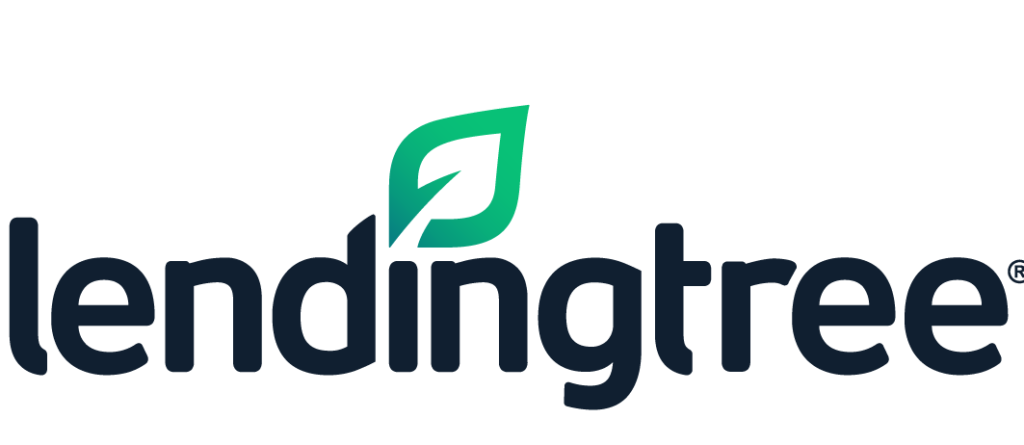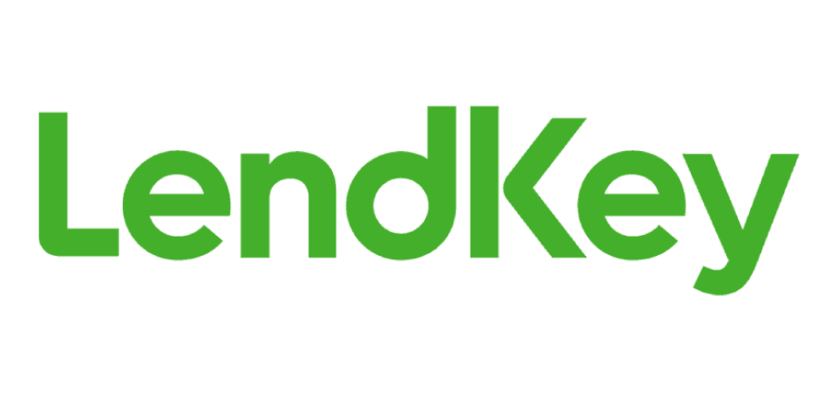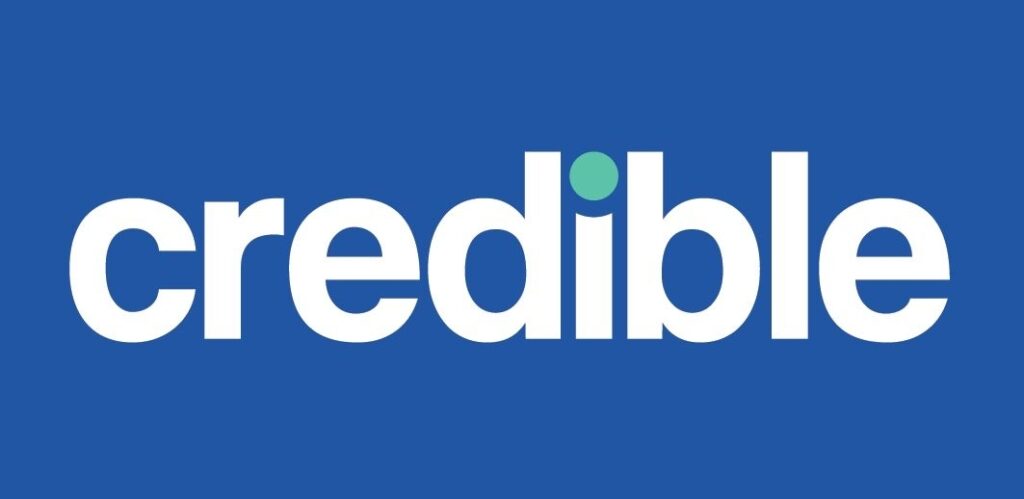As the Chicago Tribune puts it, “A college degree is still the surest way to increase wage potential”. In fact, higher education is also one of the best ways to shield or at least cushion yourself from the rapid changes in employment skill sets as well as the rise of AI.
And if a college degree has turned into a necessity, so has the need to take out a student loan to get it. Given the steady increase in the cost of education, it is no wonder that nearly 70% of people enrolled in graduate courses need the financial support of student loans.
However, like all forms of borrowing, jumping into the fast-paced river of student debt without a clear understanding of what it entails can be risky. So, if you are currently in the market for a student loan or intend to borrow sometime in the near future, continue reading to get answers to most of the questions you are likely to have.
Because the most perplexing question for students is – Who to approach for the debt- This would be a good topic to start with!
cc
Students can choose between private and federal loans (more information on how these vary coming up in a bit). Whichever path you take, you will have to do a lot of form filling. In fact, every lender that you approach will ask you to fill out forms and more. So, finding a loan that works for you can be a huge hassle, and a time consuming one at that.
Fortunately, loan marketplaces make life easy. With these companies, you fill out one form and they compare your eligibility and requirements with the offers from the lenders they work with. Simply put, they act as a conduit between the lender (the bank/organization that is actually going to give you the money) and you, the borrower.
Because they allow you to compare the rates and benefits of various lenders, you can use these marketplaces to find student loans that are the best suited for you. Now, here is the problem- There are too many of these marketplaces! Choices, choices, and more choices! Fret not, because here are reviews of the top 3 student loan comparison platforms.

They have been in business for 24 years and borrowers have availed over $6 billion in loans through them. Of course, it comes as no surprise that they have one of the largest lender networks in the business.
In terms of how it works, Lendingtree follows the traditional marketplace approach. So, you provide all your information and your requirements, and the lenders approach you with the best offers. The advantage is that you only have to fill out one form and the service will send your information to the lenders that you may qualify with while providing you with information on suitable loan products from these lenders.
Like other services of its kind, Lendingtree allows you to compare the repayment terms, APRs, loan limits, loan term, processing fees, credit score requirements and eligibility criteria of the various student loans that you qualify for. You can filter the results based on the comparison so you only hear back from lenders who are offering products that meet your requirements.
The lenders they work with: Over 1600 lenders offer their products through LendingTree. While the online loan marketplace is known to work with some of the biggest names in the business, credit unions are markedly absent from their network. As a borrower, this isn’t good for you because local credit unions often provide the best rates and the most consumer-friendly loans.
Rates and terms
- The APR for new student loans starts at 3% while the rates for student loan refinancing, as of December 2019, stand at variable APR of 1.9% to 8.59% and fixed APR of 3.49% to 7.75%, both with AutoPay.
- Loan terms vary among lenders but most do offer the standard ten-year repayment plan. Moreover, some lenders do offer longer repayment terms, including the rare bunch that will even go up to a 15 or 20-year repayment term, as long as certain criteria are met.
- There is no minimum or maximum borrowing limit for new student loans from LendingTree, but those from lenders do apply. Typically, for new undergraduate student debt, the aggregate loan limit is in the range of $75,000 to $120,000. However, graduate and professional students can borrow more.
- You can apply for a loan with or without a cosigner. However, nearly 90% of student loans are taken out with the help of a cosigner, so that is something you should consider when applying for student debt.
- The cosigner/independent student borrower will need to have a credit score of at least 660.
- LendingTree is one of the few loan marketplaces that has something to offer even to those with poor credit ratings.
- Having said that, if you are borrowing without a cosigner, you will also need to have an annual income of at least $25,000.
The pros
- Works even with those cosigners who have less than perfect credit and students with no credit.
- Has one of the largest lender networks, including most of the prominent lenders such as SallieMae, SunTrust, Earnest, Discover, Citizens Bank, PNC and others.
- Offers loan comparison as well as consumer reviews for partner lenders.
- Provides new student loans as well as student loan refinancing.
- Student loans are available with and without a cosigner.
- Possible to get private loans with a repayment term of more than 10 years.
The cons
- Expect to receive multiple calls from lenders.
- The calling can continue even after you have availed a loan.
- Although they do a soft credit inquiry, individual lenders will eventually do hard pulls once you qualify, which will impact your credit score.
- Do not have credit unions in their lender network, although they do now have a tie-up with LendKey.
- The up-front fees, including origination, processing, and disbursement are waived only if the lender offers such a facility. So, this is not a LendingTree-specific benefit as it is in the case of other marketplaces.
The verdict
LendingTree can be the ideal springboard for exploring public and private student loans. Because they have an impressive lender base, you get more funding options and a more thorough comparison of what is available.
Furthermore, a bigger lender network also equates to a greater likelihood of you finding a student loan that will be just right for you. Plus, the site can also help with student loan refinancing. Overall, LendingTree offers impressively flexible and customer-centric loan terms.

In terms of how it works, LendKey isn’t different from Credible, in the sense that it is a loan marketplace that connects borrowers with lenders. However, instead of working with the big banks, this platform exclusively links interested borrowers with credit unions, local banks and other community lenders.
The 13 year old company, which started as a peer-to-peer platform for student loans and student loan refinancing, has serviced loans to the tune of $2 billion. As with the other platforms, you start with a simple application process with them.
LendKey matches you with lenders that suit your requirements and you get to choose the loan product/lender that you want to go with. The actual application process, including the hard inquiry of your credit score, only starts after you opt-in by choosing a loan.
What sets the platform apart from its competitors is the fact that they find community lenders that offer the most borrower-friendly unemployment protection terms. Also, the fact that they exclusively deal with local lenders equates to lower rates for their borrowers.
Another striking difference is that there is no soft pull of credit score involved when using this platform. This means that although you will get quotes that suit your requirements, they won’t be personalized quotes based on your credit score. This means that the actual offers can vary significantly from the conditional offer.
The lenders they work with: At this time, LendKey has a lender network of almost 300 community lending institutions nationwide. However, they do not offer information on these lenders on their website. In other words, you will have to go through the application process before you get to know about suitable lenders.
Rates and terms
- LendKey offers an APR range of 3.39% to 7.75% on fixed loans while variable loans are available for APRs of 1.90% to 8.59%. These rates are inclusive of the 0.25% reduction for AutoPay.
- The available loan terms for private student loans are 5 , 10 and 15 years but for student loan refinancing, it is possible to borrow for as long as 20 years.
- For student loans, the lower borrowing limit stands at $2,000 while you’ll need to have a student debt of at least $5,000 to refinance your loan through them. In terms of higher limits, you can borrow a maximum of $160,000 for undergraduate courses and $300,000 for medical/veterinary degrees.
- They actively encourage you to apply with a cosigner
- A credit rating of at least 660 and an annual income of minimum $24,000 is required to qualify for loans from their lender network.
The pros
- Credit unions and local banks are known to offer lower interest rates and more flexible loan terms.
- It is possible to get a further reduction in interest rates beyond the standard AutoPay reduction.
- Loans can be returned in 30 days.
- Extended forbearance of 18 months on long term loans is among the best in the industry.
- Cosigner release available after 24 months.
The cons
- A hard pull of your credit scores is required to get actual rate quotes and to see if you qualify for the loan.
- They almost never offer student loans without a cosigner.
- There is no transparency as far as application documents are concerned.
- They do not offer consumer reviews on their lenders.
- Very little information is available on their website pertaining to their lender network as well as the application process and eligibility.
- The application process is lengthy.
The verdict
LendKey is the ideal loan marketplace for those who want to finance their higher education by taking out loans from local lenders. In terms of rates, their variable loan APR range has the lowest starting point. Plus, interest rate reduction is available beyond the standard AutoPay reduction.
So, in terms of cost of borrowing through the life of the loan, LendKey has a clear edge over its competitors. However, the lack of transparency and the cumbersome application process along with the need for multiple hard credit inquiries are some of the factors that take away from the benefits of the platform.

They call themselves the kayak of loans or more specifically student loans, and rightly so. Like Kayak.com, Credible has simplified the process of student borrowing. Founded in 2012, student refinancing loan comparison was the first service that Credible offered after its inception.
Thereafter, they moved to private student loans and have since branched into the personal loan space as well. Like LendingTree, Credible too is a loan marketplace but they do things in a slightly different manner.
When you approach Credible with your loan requirement, you initiate the process by filling out a short form that takes about 2 minutes to complete. And this is where the similarities end. After that, Credible does a soft pull of your credit score and runs the underwriting for your prequalification. You receive up to 8 or more personalized quotes from various lenders in the network and you get to compare their rates and terms.
However, these lenders do not receive your information till you opt-in for the loan from a specific lender. Once you do this, you will be redirected to the lender’s site. This is where the actual application process starts. The good news is that Credible fills out the form for you based on the information you have given, so all you have to do is submit the documents.
This is also the time at which your chosen lender will initiate a hard inquiry of your credit score. In a nutshell, only your chosen lender/lenders get to do a hard pull, which limits the impact on your credit score. If everything goes well at this stage, you are likely to receive a final offer from the lender in as little as 24 hours.
The lenders they work with: Credible has a comparatively shorter network of just 10-12 lenders for student loans although the list runs longer for student loan refinancing. They work with some of the biggest and most reliable lenders in the business such as SallieMae, College Ave, SoFi, Citizens Bank, Discover, College Ave, SunTrust, INvested, Ascent and EDvestinU.
Rates and terms
- Credible offers both fixed and variable rate student loans with an APR range of 3.95% to 11.85% for fixed and 2.83% to 10.86% for variable rates; both with AutoPay.
- The loan terms are lender-specific but the range starts at 5 years and goes up to 20 years, with the lowest rates reserved for 5-7 year terms.
- Credible has a lower minimum loan limit of $5000 for student loan refinancing and $1000 for private student loans. The maximum limit for undergraduate students stands at $170,000 with a lifetime aggregate loan limit of $200,000. Higher limits of up to $350,000 are available for students attending medical school.
- Although it is possible to apply for a student loan without a cosigner, the chances of being able to borrow without a cosigner are very slim.
- Student applicants/cosigners need a credit score of at least 680 to qualify for most loans offered on the platform.
- The minimum annual income requirement for the applicant/cosigner is also higher at $30,000.
The pros
- Credible guarantees students the lowest rates and backs the guarantee with a $200 bonus offer if you find lower rates elsewhere
- Both fixed and variable rate student loans and student loan refinancing available.
- Your information is given to prospective lenders only after you opt-in for a loan.
- No pesky solicitation calls.
- They only work with lenders that do not charge service, origination and early payment fees on student loans.
- A single form application process that gets you personalized quotes from as many as 8 lenders within a matter of minutes.
- Credible has a dashboard for the submission of documents that simplifies and speeds up the application process.
The cons
- Their credit score and minimum yearly income requirements are higher than those offered by lender networks of competitor platforms.
- They have a minimum limit for student loan refinancing of $5,000 while many lenders also have minimum loan limit of $10,000 for private student loans.
- Credible has a fairly limited number of lenders in its network.
The verdict
Credible is a fantastic option for comparison shopping of student loans. The best part is that you get the quotes without the hassle of dealing with dozens of solicitation calls.
The platform is best suited for those with good to excellent credit and in keeping with the requirements of their client base, it is no wonder that they offer some of the highest student loan limits in the market.
Frequently Asked Questions About Student Loans!
Experts are of the opinion that financial education not only helps students to borrow wisely but also plays a role in helping youngsters understand the impact of student loan on their personal, professional and financial well-being. So, before you consider student debt, here are the answers to some of the questions that you may have.
How do student loans work?
At the core of it, there is no difference between a student loan and any other form of unsecured borrowing. Your parents can fund your education through a home equity loan, but this would not be a student loan.
If you default on a secured loan like a home equity loan, the lender can and will repossess the asset (your home) mortgaged with them. In contrast, there is no collateral involved in an unsecured loan such as a student loan.
Like all other types of loans, the principal, which is the actual amount borrowed, has to be repaid with interest over a period of time. This interest can be charged at a fixed rate or a variable (changing) rate. A myriad of factors play a role in determining a person’s eligibility for a loan.
This is where student loans become different from other forms of debt because they are specifically designed to meet the educational expenditure of youngsters, who are bound to have no credit rating or a less than perfect rating.
The different types of student loans
You can obtain a federal loan or a private loan to fund your higher education. Federal loans are offered by the federal government through the Department of Education to students and parents. Private loans come from non-federal lenders such as banks, credit unions, state agencies, and other private lenders.
There is a significant difference not just in the source of the money but also in the interest rates and the loan and repayment terms, between federal and private student loans. In a nutshell, private loans are almost always more expensive than federal loans. Also, there is scope for loan forgiveness or subsidized interests with federal loans, but you don’t get this form of reprieve from private lenders.
So, why not just take out a federal student loan? Why even bother with a private student loan? Simple, the amount offered through federal loans is seldom enough to cover the entire cost. So, most students end up taking out more than one student loan.
Federal student loans
These are fixed-rate loans, so regardless of market movement, your interest rates will remain unchanged through the life of the loan. At the time of writing this article, the federal student loan interest rates are:
- Undergraduate loans- 5.05%
- Graduate loans- 6.6%
Some federal loans are subsidized and these can offer serious savings even before you graduate. If you do qualify for a subsidized loan, the federal government will pay the interest for you while you earn your degree.
Also, with federal loans (both subsidized and unsubsidized), you get more accommodating repayment terms. For instance, if you cannot meet your debt obligations, you do have the recourses of forbearance and deferment, both of which will allow you to stop making payments for a while.
As far as repayment plans are concerned, you can opt for income-based repayment and after certain years of consistent repayments, you do qualify for loan forgiveness programs with federal student loans. So, it is highly recommended that you explore all the options available for federal loans and then consider private student loans. That said, here are the 4 types of federal student loans available:
- Direct subsidized (Stafford) loans: As discussed above, the government pays interest on these loans while you are in school. Moreover, they also have your back on the interest payments during periods of deferment. However, subsidized loans are offered on the basis of financial need and they are only available to undergraduates.
- Direct Unsubsidized (Stafford) loans: These loans are available to undergraduate and graduate students, and the loan limit is determined by the cost of attendance minus any other aid that you are receiving. The interest on these loans starts accruing as soon as you take them out.
- Direct PLUS Loans: These loans are specifically meant for parents who want to fund the education of their dependent undergraduate students as well as for graduate and professional students. They require the borrower to have a decent credit history
The current fixed rate for Direct Plus loans is 7.9%. Interest is charged as soon as the loan is fully disbursed. However, deferment can be requested while the dependent undergraduate or the graduate student is enrolled at least half time and for 6 months more after graduation
- Direct Consolidation Loans: As the name suggests, these loans are meant to combine/consolidate all outstanding federal student debt into a single loan. This type of borrowing helps to make loans and their repayment more manageable and gets you a longer loan term. In some cases, it is an effective option to prevent/remedy the default and its effects.
The interest payment on federal loans is tax deductible and in most cases, the student does not need a cosigner or even a credit check done, unless you opt for a Direct Plus Loan.
Perkins Loans have been discontinued after 2017
Private student loans
The application process for private loans is considerably simpler than that of federal loans. There is no deadline to apply for these loans and the funds procured can be used for direct as well as ancillary education expenses, including the cost of books, transportation, room and board, and others.
Fixed and variable interest rates are available from private lenders and the terms of repayment can vary from one establishment to another. Some other differences include:
- Payments begin while you are still going through school, so there is no option for deferment.
- The loans do require a credit check.
- Because they are primarily based on your credit history and score, chances are that you will need a cosigner to take out a private student loan.
- Private student loan interests are also tax-deductible.
How much money can you borrow with a student loan?
Borrowing wisely is all about limiting the principal to the precise amount that you need and no more. The good thing about student loans is that most lenders have a system in place that restricts the amount of money you can borrow.
That said, most loans also have a higher limit and regardless of whether your expenses are within this limit or not, you can’t get more. Take a look at what’s available:
- For undergraduate students: The loan limit is $5500 to $7,500 per year for dependent students while independent students get a higher limit of $9,500 to $12,500. Of this, no more than the dependent student loan limit can be subsidized.
- For graduate students: Professional and graduate students get higher borrowing limits of $20,500 per year, while those in medical school can take out as much as $40,500 per year.
- For parents: Direct Plus Loans are not subject to aggregate or annual limits. Parents can take out a loan to cover the entire cost of attendance minus other financial aid received. You can borrow even if you have exceeded the graduate/professional student aggregate of $138,500. However, you will have to make arrangements to repay the excess or repay it before you get additional Federal Student Loan
- For consolidation: There is no upper loan limit for Direct Consolidation Loans. However, the interest rates and the loan term will vary based on the consolidated amount.
- For private student loans: Most private lenders offer loans to cover the entire cost of education for the year. However, they do have a higher limit in the range of $120,000 to $200,000 for graduate programs and up to $350,000 for professional and graduate programs.
How to get a student loan?
The application procedure for federal and private student loans varies significantly and the former has a strict deadline that you will have to follow.
For federal loans: Start at the Financial Aid Office of the school you are attending. You will need to fill out a form called FAFSA (Free Application for Federal Student Aid). The deadline for submission varies each year, so that is something that you need to keep an eye out for.
Typically, FAFSA is available in fall for the school term that is to start in the coming fall. Depending on the information that you offer in the FAFSA, you will be notified about your eligibility and loan limits. More information is available at fafsa.ed.gov
For private loans: You can use any one of the loan marketplaces reviewed above to know about the loans that you qualify for as well as the terms and limits offered by specific venders.
Where do you get the student loan money?
If you have received Federal Student Aid, the money will be sent to the financial aid office of your college. In contrast, private loans are sent either to the borrower or the financial aid office. If you have taken out a private student loan, and this was sent to the school, they will deduct their tuition costs and fees as well as room and board in case of college controlled housing and refund the remaining to you for ancillary academic costs.
How to calculate student loan interest?
Before you calculate the interest payment every month and through the life of the loan, you need to know three terms:
- Principal: This is the actual amount borrowed, for the sake of convenience, let us assume that this is $30,000.
- The interest rate: This is the cost of borrowing. If you have taken out a fixed interest loan, you will only be working with one rate. If you have taken out a variable rate loan, the interest rate will fluctuate. Let us go with a 6% fixed rate here.
- The loan term: This is the duration for which you have borrowed the money. For this calculation, let us assume a term of 10 years.
This would put your monthly student loan payment at $333, while the total cost of the loan over its life would be $39,967. In other words, apart from the principal of $30,000, you will pay the lender nearly $10,000 in interests. Now, you know why it is crucial to only borrow as much as you need and no more?
But, that isn’t even the last of it. If you default on your student loans, the consequences can be very serious. It also goes without saying that the default will significantly dent your credit rating and mar your chances of getting any other type of loans.
-It is best to use an online monthly payment calculator instead of wasting your time trying to do the math on your own.
What is a good student loan interest rate?
There is no such thing as a good interest rate for student loans. The lowest is without a doubt what you ought to be going for. But, things are not as cut and paste when it comes to variable rate loans. These can start as low as 1.8%, but over the life of the loan, they can climb to a whopping 12% or more.
In contrast, fixed interest rates are almost always higher than variable rates at first glance. But, the thing to note here is that they will not change. On the flip side, you will lose out on any benefits that you may get while variable rates are low.
The best way to find a good student interest rate is to compare everything that is available and to choose what suits your specific requirements. Of course, another option is to keep your borrowing to the bare minimum and seek aid in the form of grants and scholarships and work-while-you-study programs.
Do student loans affect your credit?
A student loan is simply a type of long term borrowing, so like any other loan it sure can and will impact your credit. Whether this impact is positive or negative will depend on your repayment behavior.
The good
- If you diligently make your minimum monthly payment towards your student loan, this will positively influence nearly 35% of your credit score.
- Student loans add to the diversity of your credit mix and this can positively affect almost 10% of your score.
- Because student loans go on for 5 to 10 years, they are fantastic at establishing a long credit history. This accounts for another 15% of your credit score.
The bad
- No making good on your payments can similarly impact your credit score to the same degree, just in the opposite direction. So, you could lose up to 35% of your score.
- Along the same lines, if you need to opt for loan cancellation/forgiveness (aside from what is offered on deferral loans) or bankruptcy, this can have an indelible impact on your credit score.
And the end word on the matter!
Student loan has the ability to make or break your future in more ways than one. While almost all the information you will need before you dive into the pond of student debt has been discussed above, there is one more crucial point that hasn’t been touched.
At the end of the day, the ability to pay off your student loan will depend on what happens in the job market after you walk out of school with a shiny new degree in hand. If you choose a course that has poor employment prospects, you don’t need psychic abilities to predict that you will flounder.
So, even before you start researching various student aid options and loan products, do your homework on the employment prospects of the course you are taking, not just for now but also for 2 or four years down the line. Remember, once you get that dream job or something even close to it, you won’t have much of a problem repaying your student loan. Hence, choose both your student loan and your course wisely!





